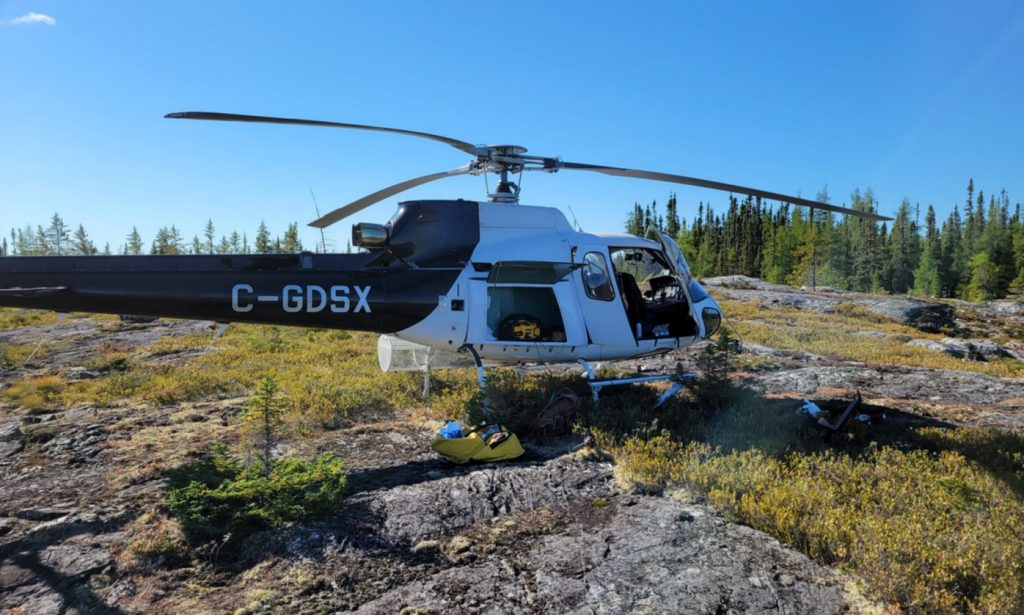Q2 Metals samples up to 2.73% Li2O at Mia lithium project, Quebec

Q2 Metals Corp. [QTWO-TSXV; QUEXF-OTCQB; 458-FSE] reported mapping/prospecting and rock sampling results of its abridged exploration work program at the Mia lithium property located in the Eeyou Istchee James Bay territory of northern Quebec.
On June 5, 2023, the company was mandated by the Quebec Ministry of Natural Resources and Forests to pause all exploration-related activities and depart from camp due to the continuing wildfire status of Northern Quebec. As a result, the mapping and sampling portion of the fieldwork lasted only two days. Despite the pause to the fieldwork, the company is encouraged by the results of the work completed and plans to execute an ambitious work program of expedited mapping, sampling and drill testing as soon as conditions allow. The following is a summary of the work completed to date, and the work plan for the remaining summer months.
The recent two-day mapping and sampling work in June of the historically known lithium pegmatites at the Mia property resulted in the collection of 28 pegmatite samples. Six samples were collected from spodumene-mineralized pegmatite and the remaining 22 from non-mineralized pegmatite to broaden the understanding of the source-rock relationships, geochronology and/or zonation of the pegmatite. A summary follows.
Spodumene-mineralized samples from the Mia zone returned 0.55% Li2O and 72.3 ppm Ta2O5; 2.05% Li2O and 101.7 ppm Ta2O5 as well as 2.73% Li2O and 61.9 ppm Ta2O5. Samples in the Carte Zone returned 1.57% Li2O and 167.3 ppm Ta2O5; 2.01% Li2O and 93.9 ppm Ta2O5; 1.05% Li2O and 72.9 ppm Ta2O5; 0.02% Li2O and 160 ppm Ta2O5.
At the Mia zone, the historically mapped spodumene-pegmatite was sampled and returned 2.73, 2.05 and 0.55% lithium dioxide. This successfully verified the 2021 and 2022 work by the property vendors of 18 grab samples averaging 2.65% Li2O.
The Mia zone now measures a mapped extent of approximately 370 metres and is up to 140 metres wide. This represents an extension of approximately 130 metres to the north of the previously mapped extent.
The company’s priority will be to undergo drill testing of the Mia zone in order to understand its true dimensions. The preliminary IP (induced polarization)/resistivity data suggest that the mineralized zone extends beneath overburden to the north, south and east.
At the Carte zone, the historically mapped spodumene-pegmatite was sampled and returned three spodumene-mineralized samples of 2.01, 1.57 and 1.04% Li2O. This successfully verified the 2022 work by the property vendors of three grab samples averaging 1.65% Li2O.
The Carte zone measures a mapped extent of approximately 110 metres and is up to 30 metres wide. Like the Mia zone, the contact relationship between the host rock and the pegmatite is unclear and additional work is needed to determine the true dimensions of the pegmatite. Additionally, the next pegmatite located approximately 250 metres to the west was sampled and returned 160 parts per million tantalum pentoxide.
“We have learned a great deal in the short amount of time we were on the Mia property, and because of that we are more enthusiastic than ever about its potential. Only a small fraction of the Mia trend has been looked at,” said Neil McCallum, vice-president of exploration. “As soon as we are able, we will return to the project to resume our efficient and results-oriented program to define the extent of the known mineralized occurrences and to hopefully make additional discoveries.”
During March, a ground IP/resistivity survey was completed over the western half of the 8-km Mia trend. Results of the survey are still being interpreted and the truncated work program prevented ground truthing of the anomalous highly resistive zones which may be indications of wide pegmatite accumulation near surface.
A property-wide high-resolution helicopter-borne magnetic survey was completed before the pause to the field program. Preliminary results suggest that there are favourable extensions of the Mia trend beyond its current extent.
A property-wide hyperspectral interpretation of ASTER and Sentinel-2 data was completed during May and June by Terra Resources of Perth, Australia. The results of the survey generated 495 target areas on both the Mia property and the Stellar property.
The historical and 2023 work has been compiled, integrated and refined, resulting in the definition of two high-priority exploration trends. The first is the Mia trend and is host to the two mineralized zones on the property as well as a corridor measuring 6 km long of untested pegmatite. Secondly, the parallel Bruce trend to the north contains pegmatite and hyperspectral targets that have not yet been sampled.
Additionally, there are other secondary exploration trends that have been defined based on the compilation and presumed extensions of the high-priority zones.
In total, there are 297 individual targets that have been selected. The company has received permits for its inaugural drill campaign at the Mia property.
As soon as safe working conditions in the area allow for a return, the company intends to immediately commence drilling the Mia zone. The company is targeting between 8,000 and 10,000 metres.
Simultaneously, the company will continue mapping and sampling on the Mia and Bruce trends along with the highest priority target zones.
Q2 Metals also owns the Stellar lithium property with 77 claims totalling 3,972 hectares, located approximately 6 km north of its Mia lithium property.
